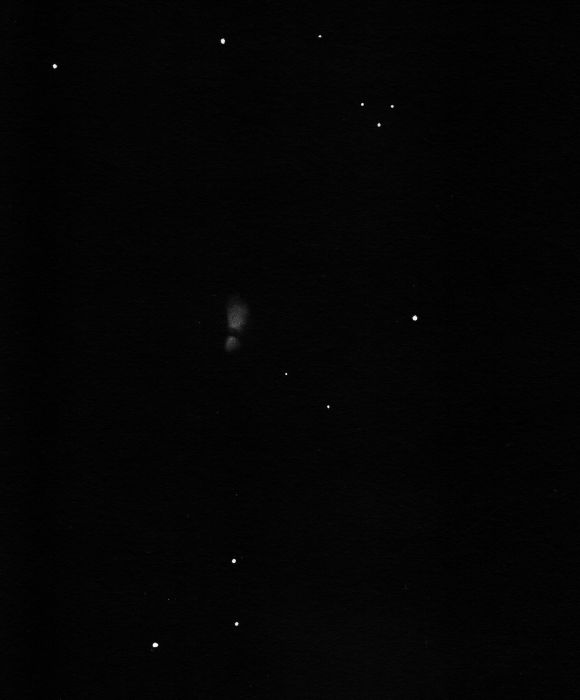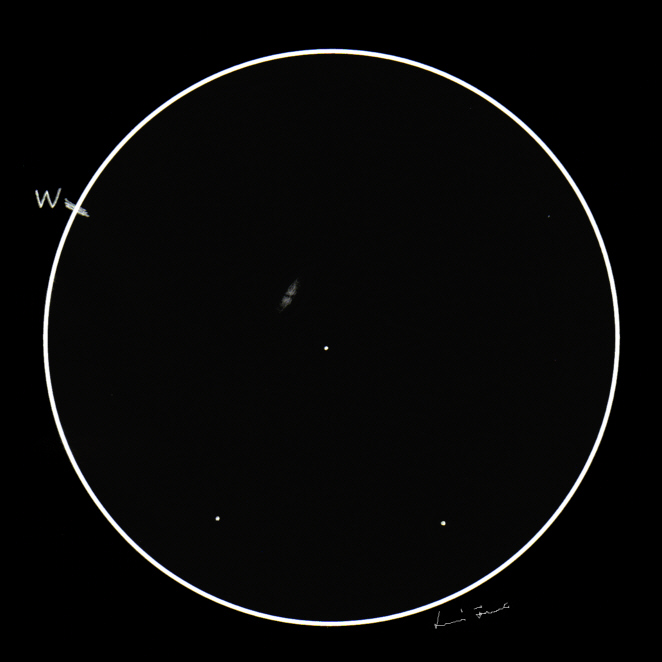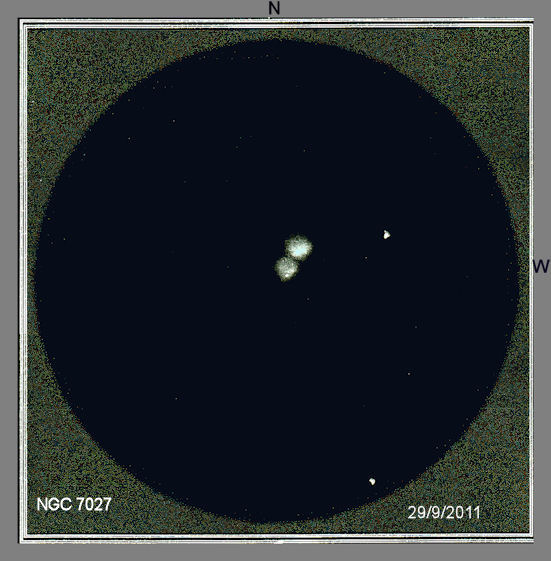
CRL 2688 Egg Nebula PK 80-6.1 PN Cyg
16 ” 520 x no Filter fst 6m3 SQM 21,39
Kreuzleshöhe 1100m, Germany

Object name: Frosty Leo (IRAS 09371+1212)
Object type: protoplanetary nebula
Location: Nádasdladány, Hungary
Date: 2013.03.07 21:15 UT
Media: B + 5B pencils on white paper, inverted digitally
Telescope: 12″ f/5 Newtonian on Dobsonian mount
Magnification: 469x
Seeing, transparency, SQM: 5/1, 3/5, 21.16 MPSAS
Temperature: 280 K
Description:
A rarely observed protoplanetary nebula I’ve first read about in Cloudy Night’s Sketching forum. It’s as small as expected, but much fainter. Elongated to the N-S, with a clearly visible dark band divinding the nebula to to halves, when the seeing gets better for a few moments. Reminds me of a faint little nearly edge-on galaxy. I haven’t checked photos of this object before my observation, so I’m quite surprised now that I’ve seen the dark band, because even on a sketch made with 600mm scope it does not show up. But I know that my eye did not lie. A highly recommended gem.
Cheerio, Ferenc

PROTO-PLANETARY NEBULA
CYGNUS
DISTANCE: 2600 ly
29/9/2011 20:10 UT
CONDITIONS: CLOUDLESS BUT HAZY. NELM 4.5
OBSERVER: PAUL METTAM
LOCATION: LONG EATON, ENGLAND.
TELESCOPE: 12″ SCT F10
MAGNIFICATION: X 660 !
MEDIA: GRAPHITE PENCIL, WHITE PAPER.
NGC 7027 is classed as a proto-planetary nebula: a star at the very earliest stages of forming a true planetary nebula. At a magnification of X116 this object looks like an out of focus 9th magnitude star elongated NNW-SSE and has a pale blue colour. Despite the dubious seeing conditions I cast caution to the wind and increased the magnificaton to X660 and could begin to see more detail. A dark rift seperated the nebula into two lobes, the lobe to the north appearing slightly larger and brighter. The northwest side of this lobe has a bright patch and other less certain areas of variation could be seen. As the observation progressed I thought i could see a faint outer envelope of nebulosity but this may of been due to the front lens of the telescope misting up!